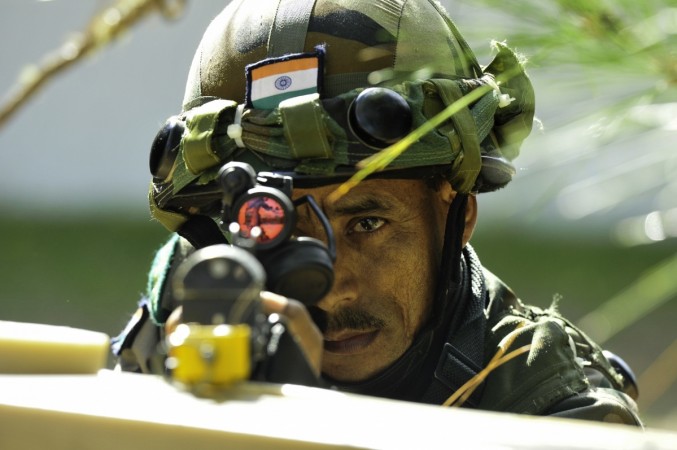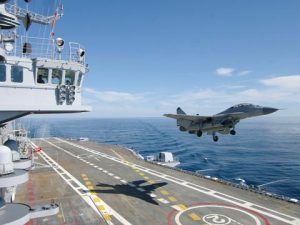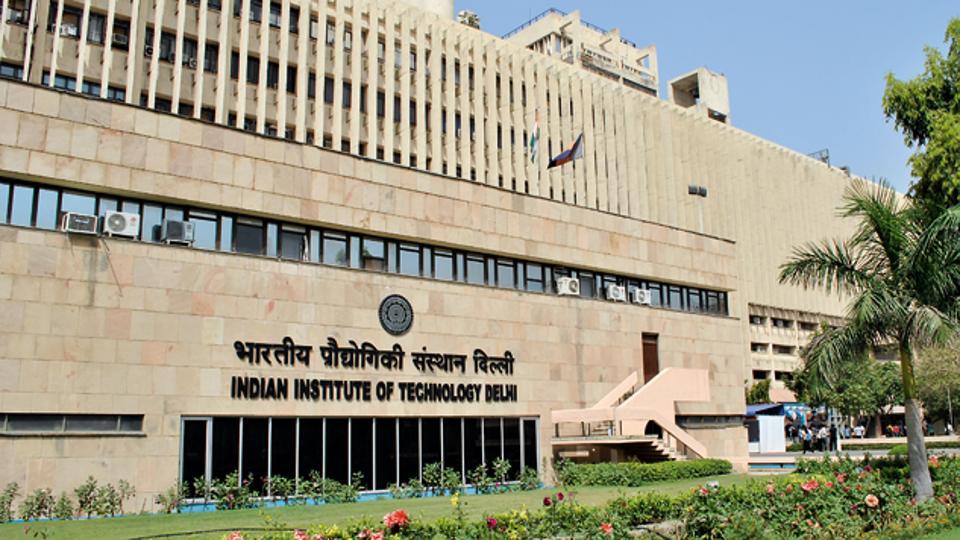 https://bharatshakti.in/knowledge-of-defence-acquisition-educating-our-achilles-heel/
https://bharatshakti.in/knowledge-of-defence-acquisition-educating-our-achilles-heel/Editor’s Note
The author had alluded to the fact of ‘Knowledge levels of the entire procurement chain being below par’ https://bharatshakti.in/defence-procurement-strengthening-our-achilles-heel , in one of his previous articles on the issue of defence acquisitions, published in BharatShakti. In this article, the General goes on to identify the gaps further. He quotes extensively from the American model where knowledge is imparted to personnel in the procurement channel through some of the best universities. In our case, the IITs are being used to improve the knowledge levels required, however, we are miles away from the standards achieved in the USA.
KNOWLEDGE OF DEFENCE ACQUISITION – EDUCATING OUR ACHILLES’ HEEL
Lack of Knowledge– Amplifications
To start with a few examples:
A defence secretary, very experienced in acquisition and procurement, flummoxed me during a presentation when he wanted to know the difference between a 155mm howitzer and a gun.We were to take an important decision on procurement of 155mm Artillery ammunition!

Image Courtesy: Indian Defence Analysis
A very high-profile officer remarked that, he was learning and gaining immense knowledge about procurement as Dy Chief of Army Staff. Otherwise, he felt his military education would have been incomplete. I felt that the Indian Army was going to pay very dearly for his adult education!
All negotiations with the US Government regarding procuring the 155mm Ultra-Light Howitzer were completed. During a meeting to go through the draft agreements with a fine-tooth comb, a senior MOD finance official remarked with conviction that we should abandon this program and go in for the Bofors Gun! He was convinced the latter was a better gun. It was a comparison between apples and old oranges.
Many three-star Generals proudly state that they spend a lot of time reading and knowing about the DPP 2016. I inwardly cringe. All this diligence is to master procedure without vision. Our leadership in defence acquisitions is perpetually shortsighted.
Lack of basic knowledge in defence procurement is not limited to the top. It permeates all the way down. The military man wants the best weapon system but rarely knows how to procure it. The bureaucrat, a jack of all trades, feels weapon acquisition is a dark hole. Most scientists, manufacturers and quality assurers are limited domain specialists with average calibre. They struggle to equip the Armed Forces with quality weapon systems.Our defence procurement is our Achilles heel. Our poor knowledge exposes it completely. Yet I don’t blame them. They have never been educated on the subject. This can be reversed if there is a will. Once the knowledge process commences things will turn around. After all,“Knowledge is Power”.
Facets of Knowledge
Defence procurement encompasses four knowledge domains – operational, technical, management and procedural. Everyone in the chain must have knowledge of each domain as per requirement. However fundamentally the uniformed man must all round knowledge, be able to put it together and drive it. Only then can he equip himself well. He cannot depend on others to bail him out.
Operational Orientation
Operational orientation is fundamental and overriding. The need to visualize and be in sync with the man on ground and his needs is paramount. The uniformed personnel are oriented, both in theory and practice, about their respective Service and others through various courses at varied levels. Operational orientation is most important for Bureaucrats, Scientists, Manufacturers (both Government and Private) and Quality Assurers. Many procurement cases fail because of lack of operational understanding. At entry level a capsule should exist to give them operational exposure and base knowledge. Later, they should be made to attend specified courses formally in all Services. This knowledge should be reinforced with visits to operational areas, witnessing various demonstrations / displays and seminars. Operational reorientation is also needed for integrated project teams. Ultimately the man on ground must be well equipped. The system must cater to ground realities. A word of caution; a little knowledge is dangerous knowledge. Hence a person after going through defence orientation should not think he knows all.
Technical Knowledge
Technical knowledge and awareness are very strong in our leading education and research institutions. However,

Image Courtesy: Indian Navy
applying this knowledge in the multidisciplinary environment of defence technology is weak. Knowledge of technologies is also poor in the Services. Hence there is always a gap between the two. We end up with outdated or second grade technologies from foreign suppliers. Technical competency in the Services must increase. Officers from the Arms must be enabled formally on wide ranging technologies as applicable to them. The Navy has shown the way. All their officers will be engineers, hereafter. On the other side, defence technology must be part of the curriculum in technical education institutes. Scientists/engineers can be a specialist in their field, but they must be taught as to how his expertise fits in the larger framework called defence technology.
There are many technically capable bureaucrats. They must be the ones who man MoD after due orientation and not accountants or veterinarians. Last but not the least, the best brains must be drawn into research and development. Presently, many of our research personnel are in it for a livelihood rather than passion for discovery. There are a lot of bridges to be built.
Management Knowhow
Management aspects related to defence procurement differ vastly from normal management practices. They encompass project planning and management, financial planning, integrated approaches and integration of niche knowledge areas. Management of procurement and contracting at international levels is also involved.
Financial management includes price discovery and negotiation, technology cost assessment, post contract management, establishing life time costs, factoring exchange rate variations, inflationary trends and many such concepts. This is not taught anywhere in India.
The irony is that the College of Defense Management, the premier institute of the Services is busy giving a MMS degree of Osmania University to cater to individual requirements rather than cater to the organisational requirement of defence procurement education. This needs a major correction.
Procedural Acumen
Procedural acumen and expertise are focused on the DPP. The DPP must be an enabler and not a handbrake to slow down the system through unwarranted processes and loops. But there are myriad procedures beyond. They come in the form of conduct of trials, maintenance evaluation and quality assurance evaluation. Conduct of these multistage events needs real education. Processing cases through various side verticals and hoops in the system need specialisation. This can come only out of having procedural knowledge which is formally spelled out.
Structures for Defense Acquisition Education
US Defense Education Model. Defense acquisition education is best formalised and practised in the USA. The

Image Courtesy: DAU
Defense Acquisition University in Virginia is focused on defence procurement. Its website says it’s run by the United States Department of Defense, offering mandatory, assignment specific, and continuing “acquisition, technology, and logistics” training to military and Federal civilian staff and Federal contractors.
The Naval Postgraduate School (NPS) in Monterey, California, offers various programs in a wide variety of disciplines to eligible U.S. military students, international students, Department of Defense (DOD) civilian employees and a limited number of defence contractors.In fact, NPS gave knowledge to the world about Operational Research concepts like PERT and CPM. These were evolved during their research on the first nuclear submarine program of USA. Additionally, about 200 officers per year study full time for a master’s or PhD in engineering or science.
Between the two establishments, they cater for most defence procurement education needs of USA. Other Service institutes and establishments supplement this effort. We have nothing even close to it.
Cranfield University, UK. A mention is a must about this unique university. It is one of the only kind which offers postgraduate courses in purely military technology subjects. The day we can establish such a university or run similar courses in our institutions, we can confidently say we have arrived.
Our Institutions. Our educational institutions on defence technology and procurement are near nonexistent. The foundation stone of Indian National Defence University (INDU), laid by the former Prime Minister, with fanfare, is still waiting for the next brick to be laid after six years. The erstwhile Institute of Armament Technology, Girinagar, Pune had potential. However, the inward-looking divisive policies of our system has resulted in the institution being split into two – the Defence Institute of Armament Technology (DIAT) run by DRDO and Military Institute of Training (MILIT) run by Army. They represent the opposite of synergy. They must be merged and upgraded in their thought process culturally first,technically later. I have already spoken about Colege of Defence Management (CDM). We have a lot of ground to cover.
Suggested Structure
The Base. Despite the weakness of our existing structures, we have a base on which we can build upon. The institutional base comprises of the CDM, The DIAT and MOUs in operation with our IITs. IITs offer a great opportunity for defence acquisition education. They have international standard technical knowhow and run high class management programs. All Naval Officers with BE/ B Tech and technical entry scheme (TES) officers of the Army can get a straight entry into IIT. Also, Army officers are taught Science and Military Technology in their courses of instruction. It is a mandatory paper for qualification for Staff Courses (DSSC/TSC). This can be built upon.

Image Courtesy: Hindustan Times
Entry Level Knowledge. At the entry level, every non-uniformed officer who is in defence procurement, acquisition, research, production or quality assurance including private industry must go through an orientation program. It could be run as outlined earlier. Modalities can be worked out.There should be a course to put selected officers including bureaucrats through a basic defence acquisition course. The CDM should take on this responsibility.At selected educational institutions, Introduction to defence technology should be an elective for MS/M Tech / PhD students.
Mid-level Education. In my opinion, mid-level education should be a set of M Tech Courses on offering Defence Technology/ Defence Technology and Management/ Defence Procurement Management. These courses can be run at DIAT, CDM and IITs in any combination. To elucidate further, about 40-50 Service officers attend M Tech courses in each of the older IITs in various disciplines. Specialisation in these courses is rarely required for Service officers. They return to academics after long gaps and find it difficult to cope with the mathematics oriented studies and compete with youngsters who have just graduated.
Officers also feel that expanding their technical horizon in breadth rather than in depth will be more beneficial. Hence some of these courses can be reoriented into M. Tech Courses in Defense Technologies and/ or Management which can be suitably drawn up within existing structure and arrangements with IITs. These will cater to Service’s needs. The course can also be open to others who function in the Defence Technology and Acquisition environment.
Specialisation in Defense Technology and Management. Specialised courses awarding M Tech / PhD in specialised domains as is done at the Cranfield University can be run by our IITs. It can also be done through international tie ups. Additionally, some of our officers can be sent abroad to learn how things are taught and practised there. We need to develop niche and important technologies in house.
Conclusion
It is my firm belief that if we are to carry out defence procurement in a sensible manner and see‘Make-In-India’ a reality, we need to be more knowledgeable. We need to upgrade our current knowledge levels. Additionally, a knowledgeable politician can make things happen in the right direction. Mr Manohar Parrikar proved that. Hence our political class also needs some education and knowledge for things to go in the right direction. I wish the current RM also the very best in her efforts to speed up modernisation.
Lt Gen PR Shankar (Retired)
(Disclaimer: The views and opinions expressed in this article are those of the author and do not necessarily reflect the official policy or position of BharatShakti.in)

Comments
Post a Comment